Seborrheic Dermatitis
Article Sections
Introduction
Seborrheic dermatitis is a chronic inflammatory skin condition that primarily affects areas with relatively more sebaceous glands (eg, face, scalp), likely related to colonization with Malassezia species. Seborrheic dermatitis is characterized by erythematous plaques with greasy scales.
Pathogenesis and risk factors
The pathogenesis of seborrheic dermatitis appears to be multifactorial, and the following contributing factors have been identified:
- Malassezia colonization: Malassezia species (eg, Malassezia globosa, Malassezia restricta) are lipophilic fungi that metabolize sebum. Sebum metabolism produces fatty acids that can disrupt the skin barrier and induce inflammation. However, the precise role of Malassezia species in the pathogenesis of seborrheic dermatitis is not completely understood.
- Sebaceous glands: Sebum provides a favorable (ie, lipid-rich) environment for the growth of Malassezia species.
- Abnormal skin barrier: An abnormal lipid composition (ie, decreased ceramide and cholesterol) in the stratum corneum of infants' skin may predispose to the condition.
Continue Learning with UWorld
Get the full Seborrheic Dermatitis article plus rich visuals, real-world cases, and in-depth insights from medical experts, all available through the UWorld Medical Library.
Figures
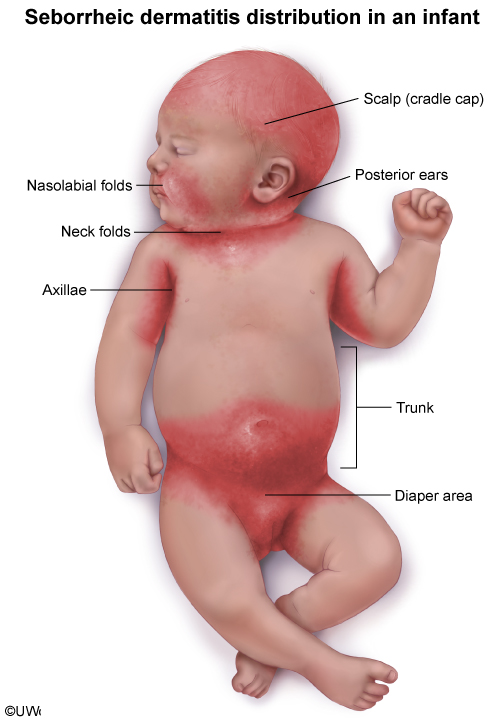
Figure 1
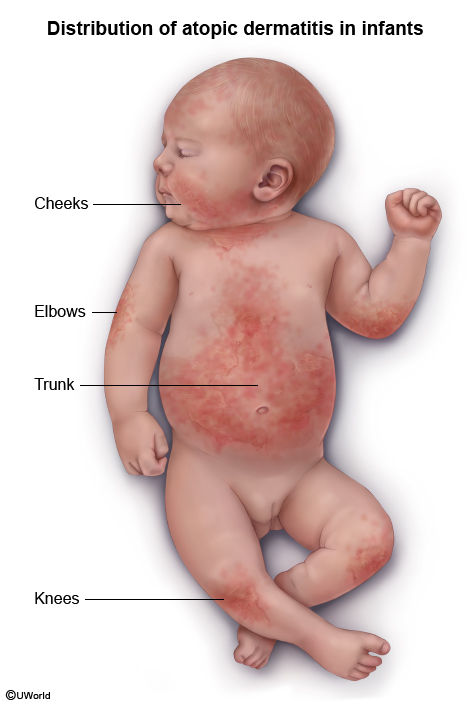
Figure 2
Images
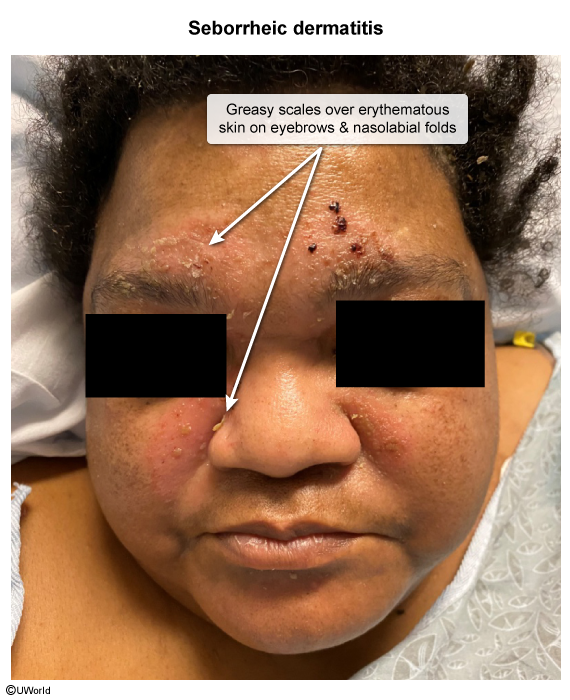
Image 1
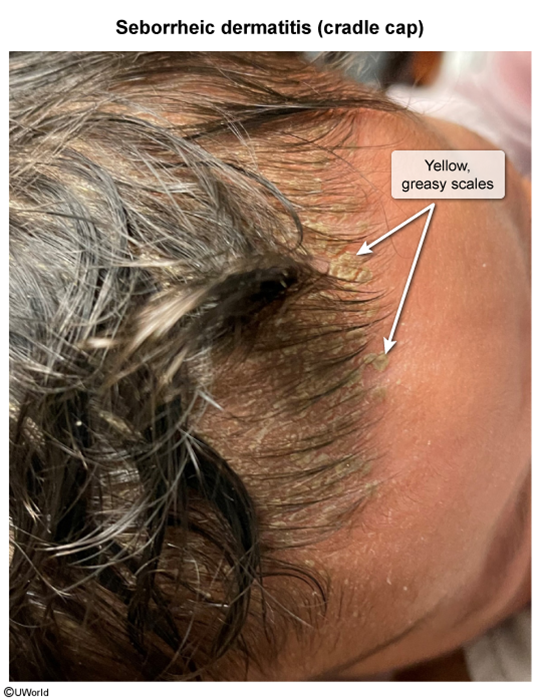
Image 2
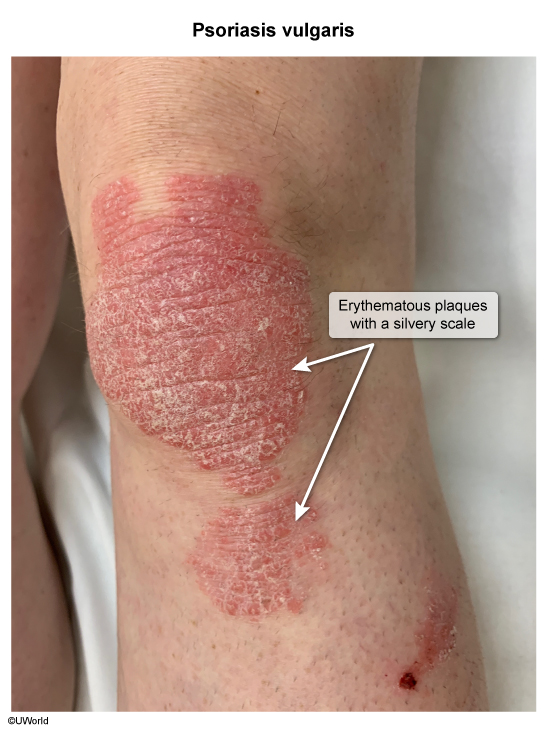
Image 3
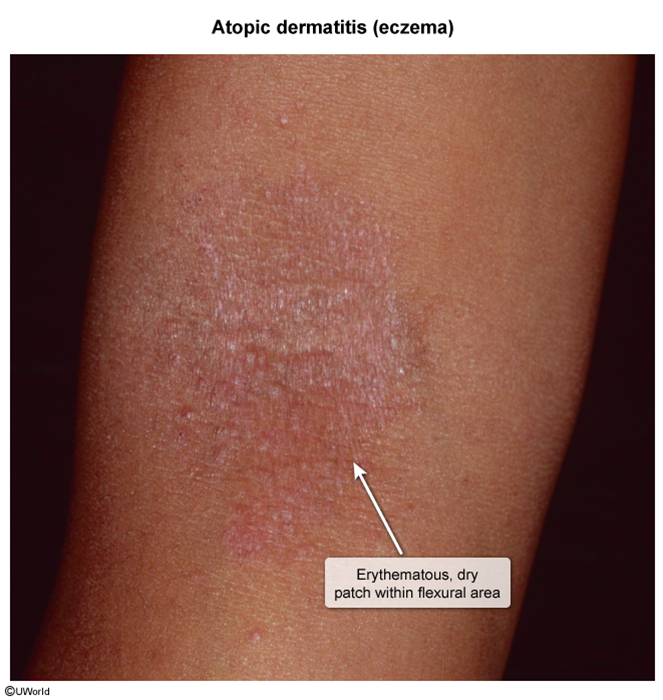
Image 4